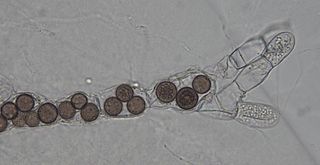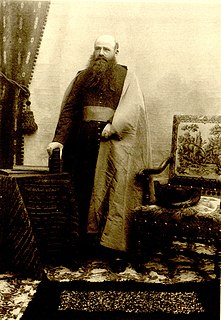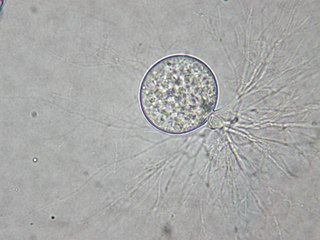
In the mathematical field of graph theory, the Petersen graph is an undirected graph with 10 vertices and 15 edges. It is a small graph that serves as a useful example and counterexample for many problems in graph theory. The Petersen graph is named after Julius Petersen, who in 1898 constructed it to be the smallest bridgeless cubic graph with no three-edge-coloring.

Maglemosian is the name given to a culture of the early Mesolithic period in Northern Europe. In Scandinavia, the culture was succeeded by the Kongemose culture and Tardenoisian culture.

The bay owls (Phodilus) are a genus of barn owls that make up the subfamily Phodilinae.

Mazra'a is an Arab town and local council in northern Israel, situated between Acre and Nahariyya east of the Coastal Highway that runs along the Mediterranean coast. The local council was founded in 1896 and was incorporated into the Matte Asher Regional Council in 1982, before proclaiming itself an independent local council again in 1996. In 2017 it had a population of 3,777.

Jaljulia, officially also spelled Jaljulye, is an Israeli-Arab town in Israel near Kfar Saba. In 2017 it had a population of 9,836.

Members of the Monoblepharidomycetes have a filamentous thallus that is either extensive or simple and unbranched. They frequently have a holdfast at the base. In contrast to other taxa in their phylum, some reproduce using autospores, although many do so through zoospores. Oogamous sexual reproduction may also occur.
Henning Eiler (Ejler) Petersen was a Danish mycologist, botanist and marine biologist. He made a major contribution to unveiling the mysterious die-back of eel grass in Northern European waters in the early 20th Century as a pathogen outbreak.
Congosaurus is an extinct genus of dyrosaurid mesoeucrocodylian. Fossils have been found from Angola and date back to the Paleocene epoch. In 1952 and 1964 Congosaurus was proposed to be synonymous with Dyrosaurus. The genus was later thought synonymous with Hyposaurus in 1976 and 1980. It has since been proven a distinct genus of dyrosaurid separate from both Dyrosaurus and Hyposaurus.
Vrilletta is a genus of beetles in the family Ptinidae.
Robert Kühner was a French mycologist most notable for reviewing many agaric genera.
Neonothopanus is a genus of three species of fungi in the agaric family Marasmiaceae. The genus was circumscribed in 1999. The type species N. nambi is found in Australia, South America, Central America, and Malaysia, while N. gardneri is found in South America. Both of these species are bioluminescent. N. hygrophanus, found in central Africa, was added to the genus in 2011.

Clavaria is a genus of fungi in the family Clavariaceae. Species of Clavaria produce basidiocarps that are either cylindrical to club-shaped or branched and coral-like. They are often grouped with similar-looking species from other genera, when they are collectively known as the clavarioid fungi. All Clavaria species are terrestrial and most are believed to be saprotrophic. In Europe, they are typical of old, mossy, unimproved grassland. In North America and elsewhere, they are more commonly found in woodlands.

Rozella is a fungal genus of obligate endoparasites of a variety of hosts, including Oomycota, Chytridiomycota, and Blastocladiomycota. Rozella was circumscribed by French mycologist Marie Maxime Cornu in 1872. Considered one of the earliest diverging lineages of fungi, the widespread genus contains 27 species, with the most well studied being Rozella allomycis. Rozella is a member of a large clade of fungi referred to as the Cryptomycota/Rozellomycota. While some can be maintained in dual culture with the host, most have not been cultured, but they have been detected, using molecular techniques, in soil samples, and in freshwater and marine ecosystems. Zoospores have been observed, along with cysts, and the cells of some species are attached to diatoms.
Sesia is a genus of moths in the family Sesiidae.
Bembecia is a genus of moths in the family Sesiidae.
Copelatus restrictus is a species of diving beetle. It is part of the genus Copelatus of the subfamily Copelatinae and the family Dytiscidae. It was described by Sharp in 1882.

Augustin Abel Hector Léveillé was a French botanist and clergyman.

Typophorini is a tribe of leaf beetles in the subfamily Eumolpinae.











